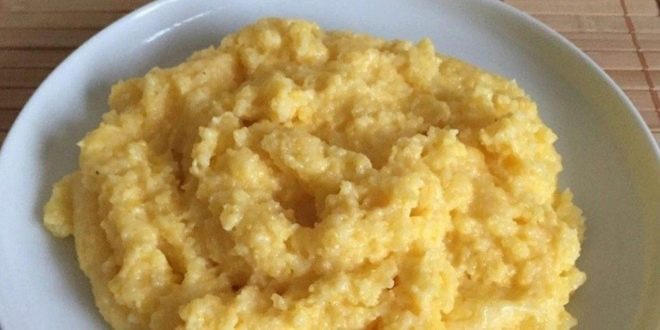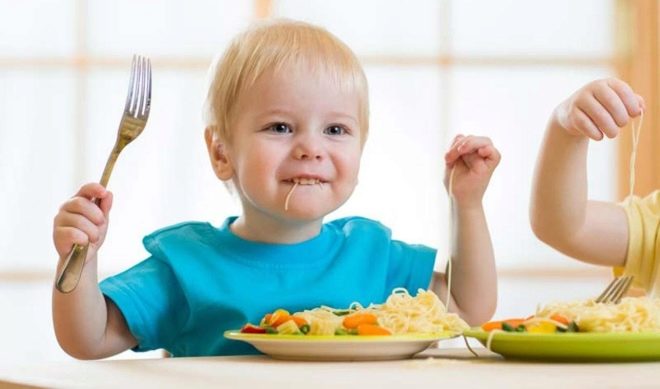What if the child does not eat porridge?
The problem when a child refuses useful porridges is quite common. It almost does not occur if the baby tries dairy-free options as a first feeding, but is familiar to many mothers who have started feeding babies with vegetables or, as Dr. Komarovsky advises, with sour-milk products.
All cereals, if you compare them with my mother's milk, mixture or vegetable puree, have a rather specific taste, because of which children can refuse from such healthy dishes. But if you show a little perseverance and patience, you can change the attitude of the toddler to this dish and teach him to eat a delicious gruel for breakfast.
Introduction to lure
Up to the age of six months, infants do not need additional nutrition, but later the growing needs of babies need to be filled with various complementary foods. Porridge occupies an important place in the nutrition of any child. Usually, it is offered to babies after vegetables at about 7 months.
But if the baby has a weight loss or there are problems with the chair, After consulting with your doctor, you can start feeding with this dish at 6 months.
For babies bottle-fed It is admissible to give the first gruel from 5 months.
For porridge, which the child will try for the first time, make certain demands. It must be dairy-free and gluten-free - from rice, buckwheat or corn grits.
It should not be given in a bottle, but from a spoon. In addition, the product must be homogeneous and quite liquid, not contain sugar or salt. The first test - no more than a teaspoon. If there is no negative reaction, the portion is gradually increased to 150 grams, depending on the age of the baby.
To make life easier for parents, modern baby food manufacturers offer a wide range of cereals that do not require cooking. They are represented by powdered cereals, which, after dilution with water, become a homogeneous, palatable mass.
If the mother does not want to feed the crumb box porridges, she can cook them independently, grinding the cereal before cooking or beating the finished dish with a blender to a homogeneous state.
Acquaintance with milk porridges due to the high risk of milk allergy is advised to be postponed until 9 months of age (for children of artificiality up to 7 months). To introduce a variant on milk should be in the same way as milk-free. When a child tries several single-component species, he can offer a mixture of several cereals. For children older than one year, thicker paps are recommended to stimulate chewing skills.
Possible reasons for failure
The child’s refusal of porridge may be due to one of the following reasons:
- the baby is not hungry;
- they tried to feed him porridge forcibly;
- he dislikes the consistency of the dish;
- the product was introduced into the feed at the wrong time;
- the child did not like certain cereal;
- the baby does not like porridge without milk;
- the dish has an inappropriate temperature;
- there are lumps in the product;
- the portion is too big.
Older children may refuse cereal if their parents do not eat such meals.
Regularly watching how mom and dad eat pasta, sandwiches and other foods, and at the mention of oatmeal or buckwheat they just smile, children will adopt their habits and also stop eating porridge.
If the baby does not want to eat at all, and not just porridge, perhaps he is sick or his teeth are cut. Indeed, with pain in the gums, digestive disorders, fever and other ailments, children often refuse to eat until their condition improves.
What to do?
First of all, we emphasize that you should not try to force the baby to eat porridge, pushing the spoon into the mouth with force. Such actions can only further aggravate the situation, scare the crumbs and postpone the time when the child loves the cereals. To accustom to porridges, it is necessary to consider the reason for the refusal of this type of dishes.
- If the baby is not hungry enough, set the plate aside for 20-30 minutes, and then offer the porridge again. If he recently had a snack with cookies, fruit, or something similar, the appetite will decrease, the dish will look less attractive. Therefore, try to remove snacks if you want to teach the toddler to eat wholesome food.
- If the child refuses a certain porridge or eats it badly, try another cereal. He is likely to like him a lot more. If you offer factory porridges for your child, change the manufacturer, as the taste, texture and smell of the same cereal from different companies have some differences. This approach is especially effective at the beginning of the introduction of cereals in the infant's diet, but it will be suitable for children who have previously eaten normally and then gradually stopped.
- Try also to change the density of the finished dish, as some kids like a more liquid version, and someone loves more thickly. Also, make sure that the porridge is warm, not too hot, and not yet cold. Remember that in hot time, hot food attracts less, so in the summer it is not worth insisting on eating cereals.
- Experiment with supplements. Many babies who refuse milk-free porridge, gladly eat it with milk, fruit, homemade jam, raisins. By the way, such additives help to make the finished porridge more attractive in appearance. The child will certainly be interested if a machine, sun or funny face will be “drawn” on top of a rice, corn or other porridge.
- Offer the crumbs porridge in a beautiful and bright dish. Most kids like it if there is a “hidden” picture on the bottom of the plate, which can be seen when everything is eaten.
If no tricks help, and the baby is categorically against any porridge, you do not need to force.
Include other kinds of cereals in the menu, for example, offer a tasty casserole or pancakes in the morning, add a little cereal to your favorite soup. Trying different recipes, you will certainly find a compromise option that will suit both mother and child.
You will learn more about what parents can think of so that the child will eat porridge with pleasure.

















